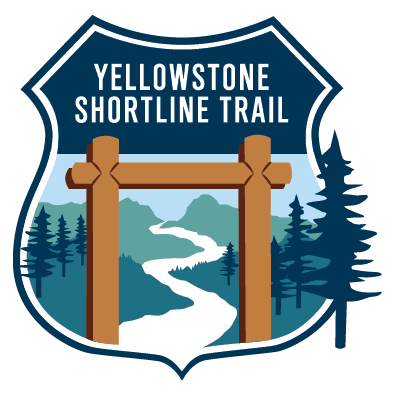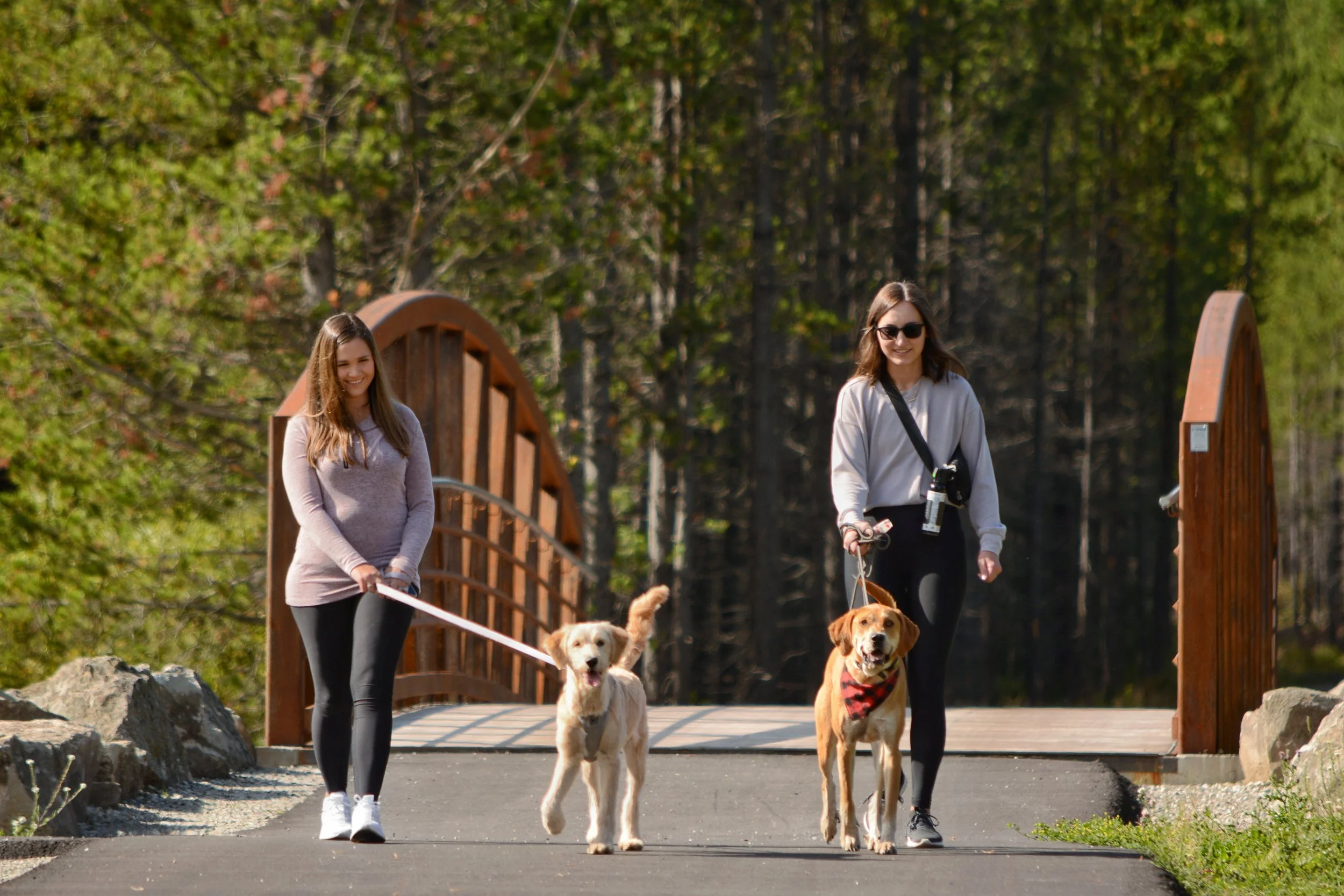Rediscovering the Shortline Route
Map showing the route of the Yellowstone Shortline Trail. Green dashes indicate the path of the trail between West Yellowstone and Reas Pass. Brown dashes to the left show the Montana-Idaho Border and brown dashes to the right show a portion of the Montana-Wyoming border in Yellowstone National Park.
Trail Start: Near the corner of Iris St. and Obsidian Avenue is West Yellowstone, MT
Trail Length: 8.8 miles one way (17.6 out and back)
Grade: Maximum 1%
Cross Slope: 0%
Trail Width: 10 feet
Surface Type: Paved asphalt with no obstacles
The Yellowstone Shortline Trail follows the historic path of the railroad line for approximately 9 miles from West Yellowstone to Reas Pass at the Montana-Idaho border. The path runs along the South Fork of the Madison River, winding through Custer Gallatin National Forest, offering breathtaking views of Montana’s landscape and glimpses of the area’s iconic wildlife. This was once the route taken by travelers aboard the Yellowstone Special and the Yellowstone Express, seasonal passenger trains offered by Union Pacific’s Oregon Short Line Railroad. For many passengers, this would have been their first impression of Montana while on their way to visit Yellowstone National Park.
Downtown
West Yellowstone
Exploring West Yellowstone
Venturing out of town from the trail start at Iris Street will take you on a journey through Custer Gallatin National Forest along the old rail bed. Venturing into town will take you to the end of the railroad line, past historic structures that once welcomed Union Pacific passengers upon their arrival to West Yellowstone.
In West Yellowstone, you will discover a town bustling with activity and brimming with history waiting to be explored. West Yellowstone has a great deal to offer for anyone visiting after a day on the Yellowstone Shortline Trail. Whether you need to repair your bicycle or replace hiking equipment, grab a cold beer and pizza or enjoy a relaxing, fine-dining experience to wrap up the day, you can find what you need in West Yellowstone.
Inset Image: The Museum of the Yellowstone in the historic Union Pacific Depot.
Spending an afternoon or evening in the town will leave you wanting to see even more. Plan a longer trip and book a stay at one of the town’s many hotels, motels, bed and breakfasts, campgrounds, or RV parks. During your stay, allow plenty of time for exploring the historic district, visiting the Museum of the Yellowstone housed in the historic depot, seeing the animals at the Grizzly & Wolf Discovery Center, hiking or biking the Frontier Trail, perusing the unique shops in town, and trying a bite to eat at all of the best restaurants. West Yellowstone is a town worth spending time in.
Greater Yellowstone Trail
Connecting to the Greater Yellowstone Trail
The Yellowstone Shortline Trail is a 9-mile section of the larger Greater Yellowstone Trail. The Greater Yellowstone Trail is a planned trail going south from West Yellowstone, through Idaho, east to Wyoming, and then north to Grand Teton National Park. The Greater Yellowstone Trail Concept Plan formalizes a vision for a world-class regional trail system along the unique and diverse 180-mile corridor.
The Greater Yellowstone Trail presents an amazing opportunity to enhance the quality of life, improve access to recreation and public lands, and generate economic opportunities for residents of eastern Idaho, southwestern Montana, and western Wyoming. Local communities throughout the corridor have already demonstrated a willingness to support, leverage, and invest in trail development.
To learn more about the Greater Yellowstone Trail, please visit: https://www.wyopath.org/our-work/pathways/greater-yellowstone.
“The Greater Yellowstone Trail will reconnect our small towns in a way reminiscent of the bygone railroad era.”
Route of the Greater Yellowstone Trail with the Montana/Yellowstone Shortline Trail portion highlighted in orange.







